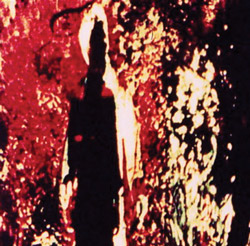
Japan: A Decaying Memory and Perceptual Images Friday 25th January 2013, 19.00
Presented by Tomonari Nishikawa
There used to be a strong community of 8mm filmmakers in Japan because of Single-8, an 8mm film format that Fujifilm introduced in 1965, a year after Kodak introduced Super 8. Today, like elsewhere, most Japanese filmmakers choose video for their projects. However, there are still artists who work on celluloid to express their ideas.
A DECAYING MEMORY AND PERPETUAL IMAGES is a program of Japanese 8mm and 16mm films that show artists’ interests in the materiality of the medium, filmmaking techniques, cinematic space and time, and expressing a personal story/feeling in an innovative way. The program consists of various experimental works, including Ichiro Sueoka’s, Portland, Oregon 1931, a lyrical manipulation of a found footage of a home movie about an athletic meet at a school, Jun Miyazaki’s Frontier, a study of the landscapes and objects at apartment complexes with a structuralist approach, Masaharu Oki’s The Shepherd Boy’s Coronation, a formal study of autumn leaves with multiple-exposure on 8mm film, and Daichi Saito’s Never a Foot Too Far, Even, a double-projection 16mm piece showing ever-changing colors and movements with a person in a fixed location.



